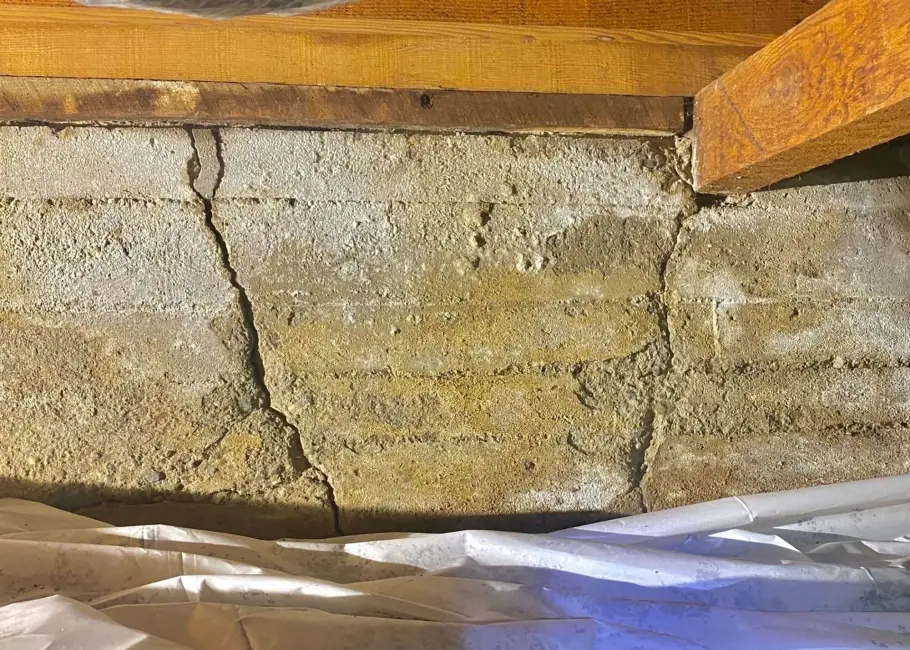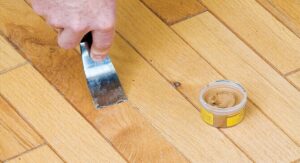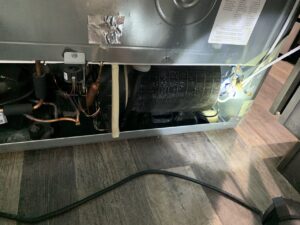Your home’s foundation is literally what keeps everything standing, so keeping it in good shape is crucial to maintaining the structural integrity of your home. Over time, foundations can develop cracks, which, if left untreated, can lead to bigger problems like water damage, mold, and even structural issues. Luckily, not all cracks are a cause for panic, but knowing how to spot and repair them early can save you a lot of time, money, and stress down the line. Here’s your guide to identifying and fixing cracks in your foundation.
Types of Foundation Cracks
Not all foundation cracks are created equal. Some are simply cosmetic, while others may indicate a more serious issue. It’s important to know what type of crack you’re dealing with so you can decide on the best course of action.
- Hairline Cracks: These are small, fine cracks that often occur as a result of concrete shrinking during the curing process. Hairline cracks are usually not a structural issue and are relatively easy to repair.
- Vertical Cracks: These are typically caused by normal settling and are common in most homes. Vertical cracks that are less than 1/8 inch wide are usually not serious and can be sealed to prevent water intrusion.
- Diagonal Cracks: These can occur when the foundation settles unevenly. If the crack is wider at one end than the other, it could indicate that part of your foundation is sinking, which may require more attention.
- Horizontal Cracks: These are the most serious type of foundation cracks and often signal major structural issues. Horizontal cracks may occur due to soil pressure or water damage and should be assessed by a professional immediately.
How to Spot Foundation Cracks
Foundation cracks can appear inside your home, around the basement, or on the exterior walls. Regularly inspecting your foundation can help you catch cracks early, before they turn into bigger problems. Here’s where to look:
- Basement or Crawlspace Walls: Inspect the walls and corners of your basement or crawlspace for any visible cracks. Hairline cracks may appear over time, but larger cracks or cracks that change in size are cause for concern.
- Exterior Foundation Walls: Walk around the outside of your home and check for cracks in the foundation or brickwork. Pay special attention to areas near windows, doors, and corners, as these spots are more susceptible to cracking.
- Interior Walls: Cracks in your home’s drywall or plaster, especially around doors and windows, could also be a sign of foundation issues. If you notice cracks in conjunction with other signs like sticking doors or uneven floors, you may have a foundation problem.
- Floors and Ceilings: Check for any cracks in your floors, especially in the basement. While hairline cracks are normal, larger or widening cracks could indicate movement in the foundation.
How to Repair Foundation Cracks
Once you’ve identified the type of crack you’re dealing with, it’s time to consider the best way to repair it. Small, non-structural cracks can often be repaired as a DIY project, while larger or more serious cracks may require professional intervention.
1. Repairing Small or Hairline Cracks
Small cracks less than 1/8 inch wide are generally not a major concern and can be easily repaired with basic materials. Here’s how to fix them:
- Clean the Crack: Use a wire brush or vacuum to remove any loose debris, dirt, or dust from the crack. This ensures that the repair material adheres properly.
- Fill the Crack: For hairline cracks, use a liquid concrete crack filler, which is available at most hardware stores. Apply the filler to the crack with a caulk gun or directly from the bottle, depending on the product. Smooth it out with a putty knife and let it dry according to the manufacturer’s instructions.
- Seal the Area: After the filler has dried, seal the crack with a waterproof masonry sealer to protect it from moisture and further cracking.
2. Repairing Vertical and Diagonal Cracks
Vertical and diagonal cracks that are wider than 1/8 inch or show signs of widening should be addressed promptly. Here’s how to repair these cracks:
- Assess the Crack: Measure the width of the crack and monitor it over time. If it appears to be getting worse, you may need to consult a professional. However, if it’s a stable crack, you can proceed with repairs.
- Fill the Crack: Use an epoxy-based concrete repair kit for larger vertical or diagonal cracks. Epoxy is stronger than traditional fillers and creates a durable bond. Inject the epoxy into the crack, making sure to fill it completely. Follow the instructions for curing time.
- Seal the Area: After the epoxy has cured, apply a waterproof sealant over the crack to prevent moisture from seeping in.
3. Repairing Horizontal Cracks
Horizontal cracks are often a sign of significant structural issues and should not be treated as a DIY project. These cracks can indicate pressure from the soil outside your home or water damage that could lead to foundation failure.
- Call a Professional: If you find horizontal cracks in your foundation, it’s best to contact a structural engineer or foundation specialist. They will assess the damage and recommend the appropriate repairs, which may involve reinforcing the foundation with steel braces, carbon fiber strips, or other structural support methods.
Preventing Future Foundation Cracks
While it’s impossible to completely prevent foundation cracks, you can take steps to reduce the likelihood of future damage:
- Maintain Proper Drainage: Water is a leading cause of foundation issues, so make sure your gutters and downspouts are working properly and that water is directed away from your home. Consider adding downspout extensions if necessary to prevent water from pooling near the foundation.
- Control Moisture Levels: Keep the soil around your home evenly moist to prevent the foundation from shifting. During dry periods, water the soil to avoid excessive shrinking, and during heavy rains, ensure proper drainage to prevent water from collecting near your foundation.
- Inspect Regularly: Make it a habit to inspect your foundation at least twice a year. Regular checks can help you catch small cracks before they become serious problems.
- Manage Vegetation: Tree roots and large shrubs near your foundation can cause soil movement, leading to cracks. Plant trees and shrubs at least several feet away from your home’s foundation and keep an eye on any large, established trees.
Final Thoughts: Keep Your Foundation Strong and Secure
Foundation cracks are a common occurrence in homes, but they don’t have to lead to major headaches if addressed early. By regularly inspecting your foundation, knowing the different types of cracks, and taking steps to repair them, you can keep your home strong and secure for years to come. For larger or more serious cracks, don’t hesitate to call a professional to assess the situation and ensure the structural integrity of your home.









